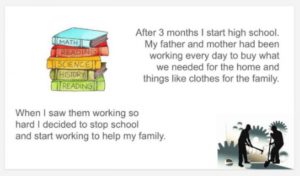Picture a newcomer you know this year. Remember the beginning of school when we were all freaking out that these kids spoke NO English? I was so worried about how in the world they would survive in a comprehensive high school. I am every year! As always I had to remind myself that they can learn very, very quickly.
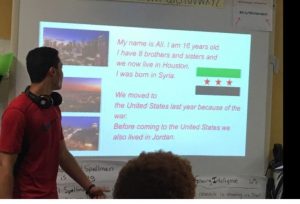
Well, we are so proud of those kiddos who are not only surviving, they are thriving!
In the first few weeks of school, I showed someone the “I Don’t Know” poster and explained that this is critical for new English learners and students with interrupted or minimal education. I explained that teaching kids what to say instead of “IDK” is a great practice for all students in every content classroom. This is Step 1 of Seidlitz Education‘s Seven Steps – a fantastic training on sheltered instruction.
This poster is helpful so our ELs have a way to participate immediately if they feel comfortable to do so. Her response was “But they can’t read that! Your kids don’t read any English.”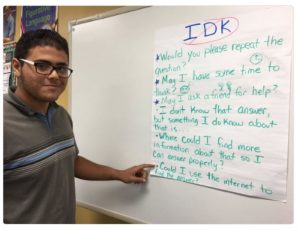
Okay. I get that. On their own… on that day…. no, they couldn’t read a poster in English. But even on that first day, they absolutely CAN read that poster with our help. Everyone can repeat and follow print and they can comprehend what the sentences mean if you offer some support. And EVERY DAY they gain more English with help from that poster.
“May I ask a friend for help?”
“Can you please repeat the question?”
With phrases like this (that are useful for all students), this environmental print is much more than a poster. For ELs, it is the first step toward participation and eventual independence in any learning environment.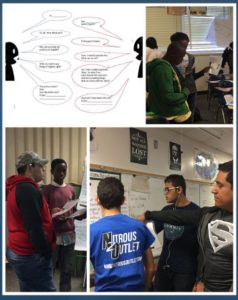
Even with brand new ELs, let’s remember that they understand more English every single day. And with some sheltered strategies, that language can be acquired even more quickly. Once my students began to gain confidence, their participation in English increased. We do a great deal of speaking in unison, reading aloud in unison, tracking print and having conversations with classmates that may start scripted but lead to authentic exchanges.
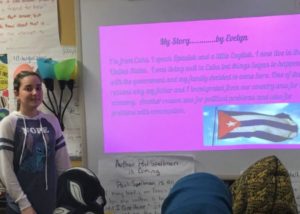 I’m thrilled to have some of those students preparing for a presentation that they will do next week for 37 World History students who will be visiting our classroom.
I’m thrilled to have some of those students preparing for a presentation that they will do next week for 37 World History students who will be visiting our classroom.
The mainstream kiddos are interested in our migration stories! They will come for a class visit, hear a few presentations and share food that they are bringing for the occasion. Can you imagine all of the positive affective, cultural and growth-mindset outcomes for both groups? Not the least of which are the learning standards we are hitting with World Geography and World History in the curriculum.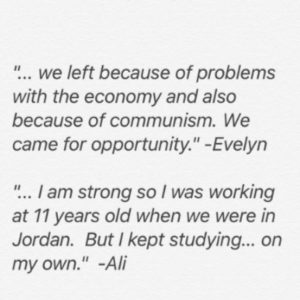
Presenting to our community is great but it gets even better. We are contributing our slides/stories to a project on migration stories that is happening in a classroom in Laos.
For this project, I have to give a big thanks to two colleagues whom I have never met. These ladies are from my Twitter PLN!
Ms. Olwen Millgate is a 5th grade teacher at the Vientiane International School in Laos. Several months back, she reached out to me on Twitter and invited us to contribute to a Google Slides presentation on Migration Stories for her students.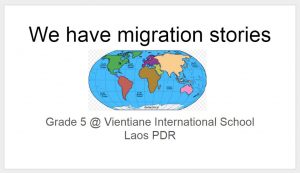 This opportunity to tell our stories and write for an authentic audience was like gold! And what an amazing opportunity to learn about each other’s cultures, countries, push/pull factors, current events and more. So much learning happens in the cracks with this kind of global collaboration. It is profound for both classes!
This opportunity to tell our stories and write for an authentic audience was like gold! And what an amazing opportunity to learn about each other’s cultures, countries, push/pull factors, current events and more. So much learning happens in the cracks with this kind of global collaboration. It is profound for both classes!
At first, I was not sure how to have my newcomers (some who are just gaining literacy in any language) participate with the limited amount of time we have in class or in a grading period.
Enter Noa Daniel and her fantastic idea of BOBs (Building Outside the Blocks)! I first heard Noa on this episode of Derek Rhodenizer’s podcast. She was talking about the idea of having your class work outside the blocks of times that we are allowed in class. WOW! Why had I not thought of this? This idea of flexibility paid off in so many ways. Noa’s students are taking off in all different creative directions so her blog is worth checking out no matter what you teach! For my students, the choice of projects and the choice of presentation
For my students, the choice of presentation dates, offered them a realistic way of preparing and sharing something in their new language. Noa also sent me a different project “What’s in a Name” that allowed the students a chance to research the origins of their name, interview parents and analyze if this name suites them. I was inspired by how many students chose to do this project even though they had already compiled enough information to present on other subjects. This project was compelling to many of them. 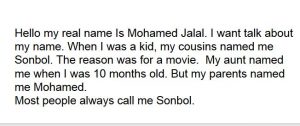
What I am seeing is that CHOICE + FLEXIBILITY = SUCCESS for my learners. Wouldn’t this be motivating for any learner?
So now we are getting close to the end of the school year. This time of year is so rewarding! As ESL teachers, we get to see all the growth our students have made and we are now communicating with more ease. We start to relax as we see these learners using their skills to take ownership of their learning.
It creates a differentiation issue when we have new students arriving all the time. My campus has received over a dozen newcomers in the past few weeks and my veteran newcomers are far beyond the beginner stage in several domains.
Thankfully, the poster is still there and the class helps the new students use it so they can start participating right away.
Thanks for your interest and for being an EL advocate!
We need more like you!
Carol

